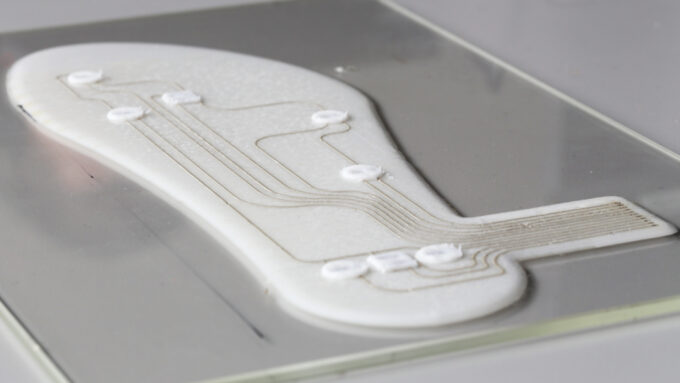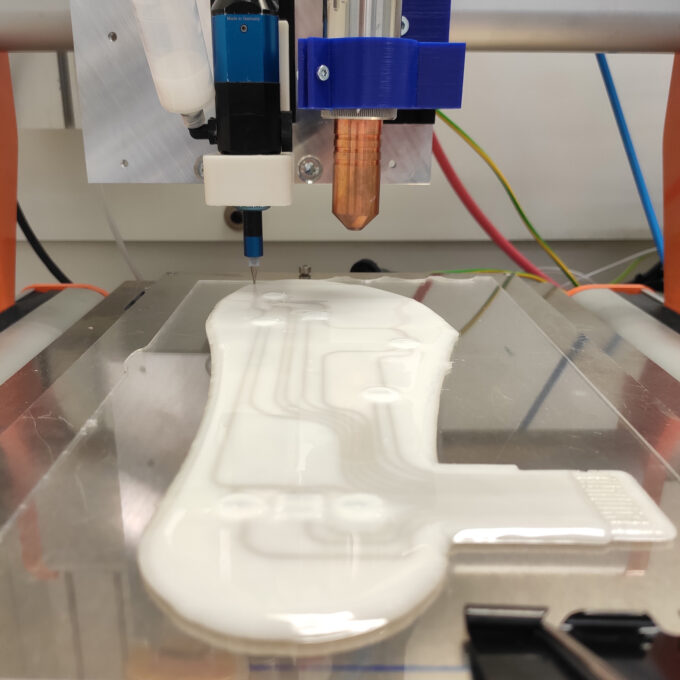3D printed insoles measure sole pressure directly in the shoe
Researchers at ETH Zurich, Empa and EPFL are developing a 3D-printed insole with integrated sensors that allow the pressure of the sole to be measured in the shoe and thus during any activity. This helps female athletes or patients to determine performance and therapy progress.

In top-class sports, fractions of a second sometimes decide between victory and defeat. To optimize their performance, athletes therefore use custom-made insoles, among other things. But people with musculoskeletal pain also turn to insoles to combat their complaints.
To fit such insoles precisely, specialists must first create a pressure profile of the feet. To do this, athletes or patients have to walk barefoot over pressure-sensitive mats, where they leave their individual footprint. Based on this pressure profile, orthopedists then create individually fitting insoles by hand. However, optimizations and adjustments take time. Another disadvantage is that the pressure-sensitive mats only allow measurements to be taken in a limited space, but not during training or outdoor activities.
Now, however, an invention by a research team from ETH Zurich, Empa and EPFL could significantly improve the situation: The researchers used 3D printing to fabricate a customized insole with integrated pressure sensors. This allows the pressure on the sole of the foot to be measured directly in the shoe during various activities.
"You can tell from the pressure patterns detected whether someone is walking, running, climbing stairs or even carrying a heavy load on their back. Then the pressure shifts more to the heel," explains co-project leader Gilberto Siqueira, senior assistant at Empa and the Laboratory for Complex Materials at ETH Zurich. Tedious matte tests are thus a thing of the past. The invention was recently presented in the journal Scientific Reports.
One device, multiple inks
However, not only the use, but also the production of the insoles is simple. Together with the integrated sensors and conductive tracks, they are produced in just one step and only on a 3D printer, a so-called extruder. For printing, the researchers use various inks whose formulations they have developed specifically for this application. For example, the material scientists use a mixture of silicone and cellulose nanoparticles as the basis for the insole.
They then print the conductive tracks on this first layer using a conductive ink containing silver, and the sensors on these at individual points - using ink containing carbon black. The distribution of the sensors is not random: they are placed exactly where the pressure on the soles is strongest. To protect the conductors and the sensors, the researchers cover them with another silicone layer.
An initial difficulty was to achieve good adhesion of the different material layers. The researchers therefore treated the surface of the silicone layers with a hot plasma.
The sensors are so-called piezo elements that convert mechanical pressure into electrical signals. They measure normal and shear forces. The researchers have also built an interface into the sole for reading out the generated data.

Read out run data wirelessly soon
Tests showed the researchers that the additively manufactured insert worked well. "So with data analysis, we can actually identify different activities depending on which sensors responded and how strongly," says project leader Siqueira.
At the moment, he and his colleagues still need a cable connection to read out the data. They have installed a contact on the side of the insert. One of the next development steps, he says, will be to create a wireless connection. "However, reading out the data has not been the focus of our work so far," the researcher emphasizes.
Such a 3D-printed insole with integrated sensors could be used in the future by athletes or in physiotherapy, for example to measure training or therapy progress. Based on the measurement data, training plans can then be adapted and permanent shoe insoles with different hard and soft zones can be fabricated using 3D printing.
Although Siqueira believes the market potential for their development is great, especially in elite sports, his team has not yet taken any steps toward commercialization.
Researchers from Empa, ETH Zurich and EPFL were involved in the development of the insole. EPFL researcher Danick Briand coordinated the project and his group contributed the sensors, while the ETH and Empa researchers developed the inks and the printing platform. The Lausanne University Hospital CHUV and the orthopedics company Numo were also involved in the project. The project was funded as part of the ETH Domain's "Strategic Focus Area" Advanced Manufacturing.
Image: Empa









